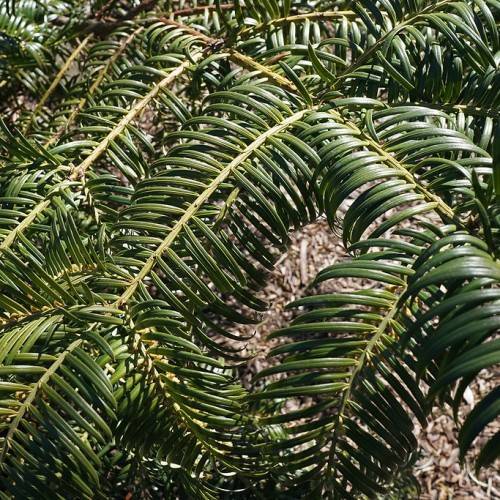
Chinese plum yew
Cephalotaxus fortunei
Cycle:
Perennial
Watering:
Average
Hardiness Zone:
7 - 9
Flowers:
Flowers
Sun:
Part shade,full shade
Cones:
Yes
Leaf:
Yes
Growth Rate:
Low
Maintenance:
Moderate
Drought Tolerant:
Yes
Salt Tolerant:
Yes
Care Level:
Medium
watering
Chinese plum yews prefer moist but well-drained soil. During the growing season between June and August, it is best to water Chinese plum yews once to twice a week, supplying enough water to keep the soil moist at all times. During fall and winter, they should be watered less frequently, only when the soil begins to dry. Too much water can cause the roots to rot. When watering, apply a deep soaking to the soil beneath the canopy of the tree rather than spraying water from overhead.
sunlight
The Chinese plum yew (Cephalotaxus fortunei) is a shade-tolerant evergreen shrub or small tree native to China, Japan, and Korea. It typically prefers partial sun to partial shade, growing best in bright dappled sunlight or shade. The plant prefers temperatures between 50–68°F (10-20°C) and can withstand temperatures as low as -10°F (-23°C). It often does best when exposed to a few hours of direct morning sunlight each day, followed by indirect sunlight or partial shade for the rest of the day. Morning sunlight is especially important to help the plant to properly set its flower buds and form fruit.
pruning
Chinese plum yew (Cephalotaxus fortunei) can be pruned anytime of the year since it is a slow growing plant. It should not be pruned heavily, as this could cause damage to the tree. Instead, only remove dead or diseased branches, or shape lightly as desired. Pruning should be done selectively and with precision as the plant can only handle moderate amounts of trimming. Take care to not prune away any new buds or the tree’s natural form. It is also important to sanitize cutting tools before and after pruning to avoid spreading any disease.
